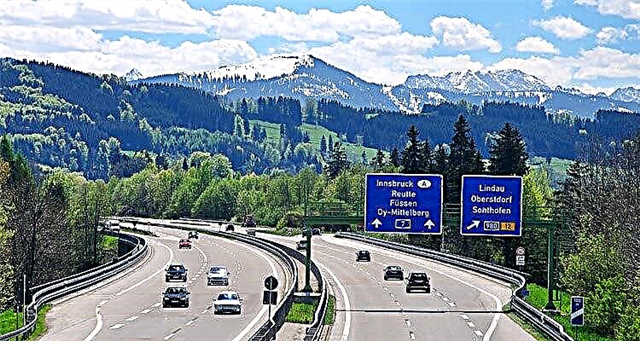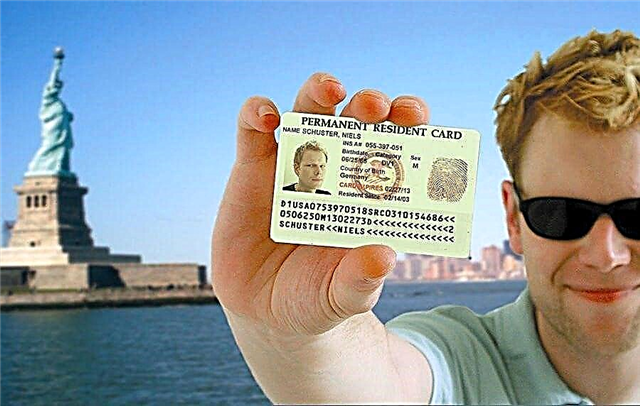The interest in the Republic of Estonia among the citizens of the CIS is growing every year. Someone is attracted to this small Baltic state by the desire to have a good rest, admiring the picturesque views, someone is going to study, and for someone the main incentive is business or the opportunity to get a job and receive a high salary. Depending on the purpose of the visit, you will also need an appropriate visa to Estonia. It is not easy to obtain permission to enter and stay in the country - the Estonian migration authorities are traditionally demanding of those wishing to visit the country.

Visit to Estonia: what kind of visa is required
To visit Estonia in 2021, citizens of most of the CIS countries are required to have a permit to enter and stay in the country. An exception is made by citizens of Ukraine and Moldova with biometric passports, when it comes to short-term stays and citizens of Ukraine and Belarus when applying for a national visa D.
Depending on the purpose of the visit, the Estonian immigration authorities issue two types of visas - short-term and long-term:
- The first type makes it possible to stay in the country for no more than 90 days within 180 days from the moment of entry. After Estonia joins Schengen, a short-term visit to the country requires a Schengen C visa. It has several options depending on the purposes of visitors who plan to come here on vacation (01), visit friends or relatives (02), take part in sports (03) , meet with business partners (04), take short-term courses (12), undergo treatment (15). Considering what an Estonian visa looks like, it is worth noting that it differs from visas of other Schengen states only by the language and name of the country.

The right to legally stay in Estonia is also granted to foreigners who have open valid visas issued by the member states of the Schengen Agreement.
What is the "Schengen Agreement", how it works, which countries are subject to the conditions, the rules for crossing the borders of the participating countries are described in the article "Schengen countries - current list for 2021".
- The second type is a single and multiple long-term national visa D, which will allow you to stay in Estonia for more than 90 days. The maximum period of stay in the country on the basis of a national visa is 548 days within two years (730 days). Such a document will be required for those who entered an Estonian university and officially found a job. A national visa, unlike a Schengen visa, gives you the right to apply for a residence permit in Estonia. In addition, holders of such an entry permit have the opportunity to stay for no more than 90 days within 180 days in other Schengen countries (without the right to work).

The article “How long is a Schengen visa issued in 2021 and what affects the terms” tells about the different periods of stay in the Schengen countries and the factors affecting this.
Take a sociological survey!
What you need to do to apply for a visa to Estonia
The general procedure for opening a permit to enter the Republic of Estonia is in principle universal and includes five main stages:
- Determination of the required type of visa.
- Preparation of all required documents.
- Applying with an application and a package of documents to the authorized consular body.
- Waiting for the completion of the application review process.
- Receiving a finished document.
The procedure itself and the procedure for obtaining a permit to enter Estonia will differ depending on the type of visa being issued - Schengen or national, therefore both options must be considered.
How and where to apply for visas to Estonia
You can open an Estonian national visa D only by applying in person to the diplomatic mission of Estonia. Before the visit, you must make an appointment online.
Having entered the page, you should:
- Enter your first and last name, phone number, e-mail address, indicate the reason for the request, enter the captcha and click "Next page".

- On the page that opens, select the required consulate or embassy, and also indicate the service - "Application for a visa". Then go to the next page.

- On the new page, select a suitable date from the list of free days.

- A new page will automatically open with a choice of free time. A convenient time for the visit should be indicated.

- The page will display the summary of the booking. At this point, you can make adjustments or cancel your reservation.
 List of Estonian diplomatic missions in the CIS countries
List of Estonian diplomatic missions in the CIS countries
| Location | Zone of jurisdiction | Phone numbers and reception times |
|---|---|---|
| Moscow (consular section, Embassy) | Moscow, 19 republics, 9 territories, 3 autonomous territories, 1 autonomous region, 40 regions | +7 (495) 737 36 48 |
| Maly Kislovsky per., 5 | +7 (495) 737 36 40 | |
| Monday Friday | ||
| 09.00—12.00 | ||
| Saint Petersburg (Consulate General) | St. Petersburg, Republic of Karelia, Leningrad, Arkhangelsk, Murmansk, Novgorod, Vologda regions | +7 (812) 627 14 71 |
| Bolshaya Monetnaya, 14 | +7 (812) 702 09 20 (for groups of 5 people or more to participate in cultural events and sports competitions) | |
| Monday Friday | ||
| 09.00—12.00 | ||
| Pskov (Pskov Chancellery of the Consulate General in St. Petersburg) | Pskov region | +7 (8112) 725 1380 |
| st. Narodnaya, 25 | Monday Friday | |
| 09.00—12.00 | ||
| Minsk (Embassy) | Belarus | 375172177060 |
| st. Platonov, 1B | Monday Thursday | |
| 9.00–12.30 | ||
| +375172177061 (for groups of more than 5 people) - Monday - Friday 9.00-11.00, 14.00-16.00 | ||
| Kiev (Embassy), | Ukraine Moldova (only national visas) | +380 (44) 590 24 40 (for groups of 5 to 10 people) |
| st. Pushkinskaya, 43b | ||
| Nur-Sultan (Embassy) | Kazakhstan Kyrgyzstan (for national visa) | +7 71 72 240 310 |
| st. Kabanbai Batyr, 28 | Tuesday 14.00-16.00 | |
| Friday 10.00–12.00 | ||
| Live queue, no appointment | ||
| Bishkek (Swiss Embassy), consular and visa departments | Kyrgyzstan (only for Schengen visas) | Online registration on the site |
| Erkindik boulevard, 21 | ||
| Tashkent (Embassy of Latvia) | Uzbekistan | (998 71) 237 22 15 |
| st. Lashkarbegi, 16a, | ||
| Yerevan (Embassy of Lithuania), | Armenia | +374 10 297 682/683; |
| st. Babayan, 2/13 | +374 10 297 682 | |
| Monday - Friday 9.00-13.00 |
When visiting the embassy, you need:
- submit a completed application form and a package of documents;
- pay the consular fee;
- submit biometric data (children under 12 years old must also be present when applying);
- answer the questions of the consular employee about the reasons for applying for a national visa.
 Registration of Schengen entry permits (a transit visa through Estonia for citizens of the CIS is irrelevant) is carried out by the consular departments of the Embassy of Estonia. Such a permit must be applied for no earlier than three months and no less than 15 days before travel.
Registration of Schengen entry permits (a transit visa through Estonia for citizens of the CIS is irrelevant) is carried out by the consular departments of the Embassy of Estonia. Such a permit must be applied for no earlier than three months and no less than 15 days before travel.
There are three ways to submit an application and documents:
- Directly to the Estonian Embassy or Consulate General (for citizens of Kazakhstan this is the only way). As space is limited, an appointment must be made in advance by telephone to make an appointment. When registering, you should indicate to the operator your name and surname, citizenship, date of birth, number and validity of your passport, contact phone number. Every applicant must be present, including infants. The applicant must have with him a printed and personally signed visa application form (for minors, it is signed by one of the parents or guardian). It should be borne in mind that you will not be able to pay the state duty in cash when you visit the Estonian consulate - you must use a bank card.
- Use the services of one of the VFS GLOBAL service centers in Russia and the Republic of Belarus. No prior registration is required for submission of documents.
In Uzbekistan, the interests of Estonia are represented by the Embassy of Latvia. In this case, you must submit a preliminary application online in advance.
Estonia is represented in Armenia by the Embassy of Lithuania.
In Moldova, you can apply for a Schengen visa at the Unified Visa Center in Chisinau.
- The third option is to use the VFS.GLOBAL commercial service "Mobile Biometrics", when an employee of the center arrives at a convenient time for the client, quickly accepts documents and removes biometric data on the spot.
What documents are required
 Before you go to apply, you need to prepare all the necessary documents for obtaining an Estonian visa. The basic kit includes:
Before you go to apply, you need to prepare all the necessary documents for obtaining an Estonian visa. The basic kit includes:
- passport, valid for another three months after the expiration of the visa, with at least two blank pages;
- medical insurance with a coverage amount of 30,000 euros. Insurance must cover the entire Schengen area and coincide in time with the validity of the visa. If the visa is multiple-use, then insurance should be issued for the first planned trip. Each new trip requires a new policy;
- color photo (3.5x4.5 cm) not older than 6 months. Basic requirements for the photo: 75-80% of the face, light solid background, neutral facial expression in full face, no headgear, closed mouth, open eyes;
- printed application form.
Application form for national and Schengen visas to Estonia
To fill out an online application form, you need to go to the Main Visa Application page. Here you should select the desired profile - Schengen C or national D.

In the menu, you can choose the Russian-language version of the questionnaire, but you need to fill it out only in Latin. The transition to the next page is possible only after filling in all the columns.
On the first page, you must indicate the applicant's email address. The finished result of the completed questionnaire will be sent to this address.

The structure of the application form for Schengen and national visas is largely the same. Let's consider it in more detail.
The first four pages are the same for both types of permissions:
- Page 2/13 - here you need to enter the personal data of the applicant - indicate the surname and name, date and place of birth. For the child, enter information about his parents or guardians.

- Page 3/13 contains information on citizenship, gender and marital status.

- On page 4/13, the details of the applicant's passport should be entered.

For details on how a Schengen visa is issued, read the article “Applying for a Schengen visa in 2021: detailed instructions for obtaining a document and financial guarantees”.
Page 5/13 is almost identical for both types of entry permits, but there is no clause on the applicant's residence in his country of birth or citizenship in the long-term visa application form.

Page 6/13 in the application form for a Schengen entry permit requires providing information on the number of trips that the visitor plans to make and the length of time of residence in Estonia, indicate the country of initial entry, as well as which other Schengen countries are planned to be visited.

In the application for a national visa, you need to indicate the frequency of entry, how many days you plan to stay in the country, the dates of entry and exit.

On page 7/13, the long-term entry permit application form should provide information on the presence or absence of family ties with EU citizens.

In the application for a Schengen visa, it should be additionally noted that the Schengen visas received over the past three years, the fact of passing the biometrics, should be noted.

Page 8/13 is dedicated to the purpose of the trip.


On page 9/13 it is required to enter information about the place of stay in Estonia. On the Schengen application, you must additionally indicate the date of entry and exit.


On page 10/13, it is necessary to indicate the source of funding for the trip and stay in the country.

On page 11/13, in the application for a national visa, you need to indicate the presence or absence of previous visas and residence permits, as well as the fact of passing the biometrics. In the application for a Schengen visa, the applicant is automatically redirected from page 10/13 to page 12/13.

On page 12/13, please indicate the place of application, detailed home address, telephone number and email address.

On the last page (13/13), the applicant confirms the entered data and agrees to the use of personal data.


After all 13 sheets of the questionnaire are filled in and saved, a proposal will appear on a new page to print the questionnaire or proceed to filling in the next one. The finished result will automatically be sent to the applicant's e-mail.

The questionnaire should be printed, signed and photographed.
What additional documents may be required
Considering the question of what documents are needed for a trip to Estonia, it should be noted that in addition to the basic list, additional ones may be required.
To obtain a national visa D, first of all, you will need:
- documents confirming the purpose of a long-term stay in the country: study at a university (Letter of Acceptance / Admission Letter), employment (employment contract), entrepreneurial activity, family reunification, treatment;
- work permit issued by the Estonian Police and Border Guard Board;
- written certificate of the employer (in free form) on the availability of a place for the residence of a foreign worker (exact address is required);
- confirmation of the availability of money for living in Estonia.
Other papers may also be needed, which will be reported to the applicant additionally.
When issuing a short-term entry permit, a standard package of papers, in addition to basic documents, must include:
- a copy of the pages of the civil passport with biographical data and a registration mark;
- documents on the purpose of the trip;
- proof that the applicant has money or sponsorship at the rate of at least 108 euros per day during a visit to the country;
- presence of a place of residence in Estonia.
 Minors must additionally have copies of a birth certificate, certified by a notary, parental consent to travel (if the child is traveling alone or with one of the parents).
Minors must additionally have copies of a birth certificate, certified by a notary, parental consent to travel (if the child is traveling alone or with one of the parents).
Situations when a minor needs permission to leave from a parent / s are described in detail in the article “When a child needs permission to travel abroad”.
When applying for various types of Schengen short-term entry permits, there is often a need for additional papers.
List of additional papers for different types of Schengen visas
| Type of Schengen entry permit | The documents |
|---|---|
| Business visit | invitation from partners, companies; |
| letter / order of business trip | |
| Tour trip | certificates of the purpose of the trip, tour package, route, trip plan; |
| for retirees, housewives and other dependents - confirmation of the availability of finance; | |
| hotel reservation | |
| Visit to relatives / friends | invitation and a copy of the identity card of the inviting person; |
| confirmation of family ties; | |
| confirmation of the legality of the inviting person's stay in Estonia | |
| Guest visit | invitation and a copy of the identity card of the inviting person; |
| confirmation of the legality of the inviter's stay in Estonia; | |
| proof of place of residence | |
| Participation in cultural, sports, educational programs | invitation, tickets to the event, indicating the organizers, length of stay |
| Treatment | medical opinion, medical direction; |
| confirmation of payment or confirmation of the availability of finance for treatment; | |
| confirmation by an Estonian clinic or hospital of the estimated costs, guarantees of reimbursement of the estimated costs |
Which CIS citizens need an Estonian visa
 The answer to the question whether a visa to Estonia is needed for Russians or other citizens of the CIS countries will be affirmative for all countries except Ukraine and Moldova. Their citizens do not need a Schengen short-stay visa to Estonia, provided they have valid biometric passports.
The answer to the question whether a visa to Estonia is needed for Russians or other citizens of the CIS countries will be affirmative for all countries except Ukraine and Moldova. Their citizens do not need a Schengen short-stay visa to Estonia, provided they have valid biometric passports.
Long-term stay on the territory of Estonia is possible for all CIS citizens only if they have a national Estonian visa D. Some concessions (for example, in the payment of duties) are made for Belarusians and Ukrainians.
Terms and cost of making a visa
The approximate processing time for an Estonian D visa and the processing time for a single Schengen permit are the same - up to 10 calendar days. In some cases, the processing time can be increased up to a month.
As a matter of urgency, the term for issuing a C visa for citizens of the Russian Federation and Ukraine (without biometric passports) can be reduced to 3 working days for a double price. The reason for the urgent registration must be objective and documented.
The validity periods of entry permits are standard: short-term single- and multiple-entry permits - 90 days of stay within 180 days, national long-term visa - respectively from 90 to 365 days per year.
The cost of obtaining a visa to Estonia depends on the type of permit, the applicant's citizenship and urgency.
| Citizenship | Visa fee (euro) |
|---|---|
| Short Term Permits C | |
| Russian Federation | 35 |
| Armenia | |
| Moldova (for persons without biometric passports) | |
| Ukraine (for persons without biometric passports) | |
| Belarus | 60 35 (for children 6-12 years old) |
| Kazakhstan | |
| Uzbekistan | |
| Kyrgyzstan | |
| National visa D | |
| Ukraine | - |
| Belarus | - |
| Other CIS countries | 80 |

It should also be borne in mind that a service fee of € 11 is charged per applicant for VFS Global services.
A visa is issued free of charge:
- children under 6 years old;
- disabled children under 18;
- disabled persons of the 1st group and one accompanying person;
- pupils, students, graduate students leaving for study;
- participants in university and cultural exchanges;
- persons following to the funeral of a close relative.
For using the Mobile Biometrics service, you need to pay 150 euros (1 application), 270 euros (2 applications), 383 euros (3 applications), 500 euros (from 4 to 10), etc. Delivery of documents via Pony Express will cost 25-30 euros.
You can pay at consulates, by credit card or in cash in euros, at VFS Global centers - in national currency at the current exchange rate. It should be remembered that the consular fee for a visa to Estonia is not refundable in case of refusal to open an entry permit.
Additional information on the material side of the issue of obtaining a visa is presented in the article "Service fee for obtaining a visa: cost and payment procedure".
How to track the status of the submitted application
The status of your Schengen travel permit application can be tracked on the VFS Global website. To enter your personal account, you need to indicate the name and number of the submitted application.

When submitting an application, you can order an SMS notification service about the readiness of a visa.
You can also get information about the status of the application by calling the call center: +7 (499) 705-99-51; +7 (499) 703-35-27).
Information on the status of documents submitted for a long-term national visa can be obtained by contacting the consulate directly.
What to do in case of visa refusal
The decision to issue / not issue an entry permit is made by the Embassy of the Republic of Estonia. The refusal is not justified, only a notification is sent to the applicant.
Describes the reasons for the delay or refusal to issue a visa and the actions of the applicant in such cases, the article "Reasons for refusing a visa - resubmission of documents in 2021".
In case of an unfavorable outcome of the examination of documents and refusal to open a Schengen visa, the applicant, who believes that there have been violations, has the right to appeal the decision within 30 days from the date of receipt of the notification.
To do this, he must file a petition for an appeal and pay a fee (20 euros). The application must be filled out in Latin letters.
The application, a copy of the passport and confirmation of the payment of the fee should be submitted to the consulate or sent by e-mail to the Estonian Embassy.
If the appeal is rejected within 30 days, the applicant is entitled to a second appeal. You must pay 20 euros again and contact the consular department of the Ministry of Foreign Affairs.
Traveling to Estonia by car
Traveling with your own car to Estonia has both advantages and disadvantages. Good roads, short distances, well-developed infrastructure, mobility and family vacations are more than offset by such disadvantages as expensive gasoline and high fines for violations.
Good roads, short distances, well-developed infrastructure, mobility and family vacations are more than offset by such disadvantages as expensive gasoline and high fines for violations.
The answer that you need to travel to Estonia by car will contain a standard set of documents for a tourist: a valid passport, an open visa (national or short-term), a child's birth certificate, medical insurance with coverage of at least 30 thousand euros.
In addition, the driver must have with him:
- Green Card (international car insurance). Issued for at least 14 days;
- technical passport of the car;
- driver's license (international or new Russian license).
In addition, when crossing the state border, all rules for entering Estonia must be observed. Entry to the Republic of Estonia from the Russian Federation is possible through the checkpoints Ivangorod-Narva (the busiest), Kunichina Gora-Koidula and Shumilkino-Luhamaa.
How to correctly cross the border by car, by other means of transport, is described in the article “Customs regulations when crossing the Estonian border”.
Instead of a conclusion
The process of obtaining entry permits to Estonia - Schengen short-term and national visas - is practically no different from obtaining a permit to other Schengen countries. Considering the question of how to independently apply for a visa to Estonia, it is worth noting that the algorithm of actions is simple and every interested person is quite capable of solving the problem. The key to success will be strict adherence to the established rules.
To obtain Schengen visas, the easiest option would be to contact one of the VFS Global centers. For a national visa, you must apply directly to the consular offices of the Estonian Embassy.
The status of your short stay visa application can be tracked on the VFS Global website. A national visa to Estonia through the consulate can be traced by applying directly to the Embassy.
The applicant has the right to appeal twice in case of refusal to issue an entry permit.











